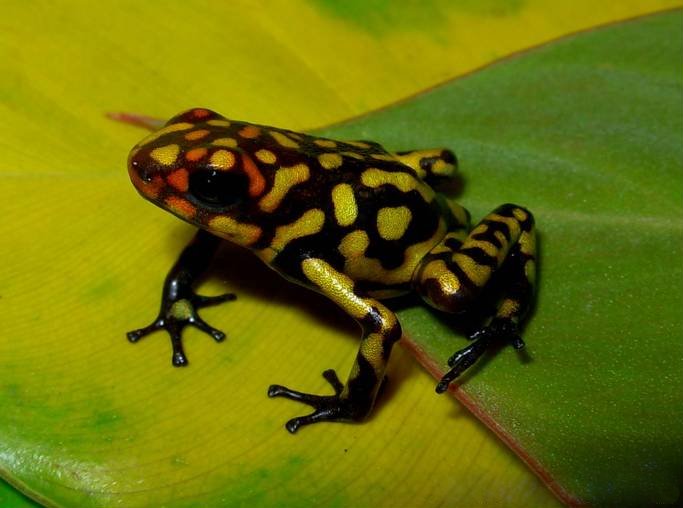|
Oophaga
''Oophaga'' is a genus of poison-dart frogs containing twelve species, many of which were formerly placed in the genus ''Dendrobates''. The frogs are distributed in Central and South America, from Nicaragua south through the El Chocó to northern Ecuador (at elevations below ). Their habitats vary with some species being arboreal while other being terrestrial, but the common feature is that their tadpoles are Oophagy, obligate egg feeders. Most species in this genus are seriously threatened and ''Splendid poison frog, O. speciosa'' is already extinct. Etymology ''Oophaga'', Greek for "egg eater" (''oon'', '), is descriptive of the tadpoles' diet.Zimmermann, E. and Zimmermann, H. 1994. ''Reproductive strategies, breeding, and conservation of tropical frogs: dart-poison frogs and Malagasy poison frogs''. In: J.B. Murphy, K. Adler and J.T. Collins (eds), Captive management and conservation of amphibians and reptiles, pp. 255-266. Society for the Study of Amphibians and Reptiles, Ith ... [...More Info...] [...Related Items...] OR: [Wikipedia] [Google] [Baidu] |
Dendrobates Pumilio
The strawberry poison frog, strawberry poison dart frog or blue jeans poison frog (''Oophaga pumilio'', formerly ''Dendrobates pumilio'') is a species of small poison dart frog found in Central America. It is common throughout its range, which extends from eastern central Nicaragua through Costa Rica and northwestern Panama. The species is often found in humid lowlands and premontane forest, but large populations are also found in disturbed areas such as plantations.Savage, J. M. 2002. The Amphibians and Reptiles of Costa Rica. University of Chicago Press, Chicago and London. The strawberry poison frog is perhaps most famous for its widespread variation in coloration, comprising approximately 15–30 color Polymorphism (biology), morphs, most of which are presumed to be true-breeding. ''O. pumilio'', while not the most poisonous of the dendrobatids, is the most toxic member of Oophaga, its genus. Diet The diet of ''O. pumilio'' causes the skin of the amphibian to become toxic ... [...More Info...] [...Related Items...] OR: [Wikipedia] [Google] [Baidu] |
Oophaga Pumilio
''Oophaga'' is a genus of poison-dart frogs containing twelve species, many of which were formerly placed in the genus '' Dendrobates''. The frogs are distributed in Central and South America, from Nicaragua south through the El Chocó to northern Ecuador (at elevations below ). Their habitats vary with some species being arboreal while other being terrestrial, but the common feature is that their tadpoles are obligate egg feeders. Most species in this genus are seriously threatened and '' O. speciosa'' is already extinct. Etymology ''Oophaga'', Greek for "egg eater" (''oon'', '), is descriptive of the tadpoles' diet.Zimmermann, E. and Zimmermann, H. 1994. ''Reproductive strategies, breeding, and conservation of tropical frogs: dart-poison frogs and Malagasy poison frogs''. In: J.B. Murphy, K. Adler and J.T. Collins (eds), Captive management and conservation of amphibians and reptiles, pp. 255-266. Society for the Study of Amphibians and Reptiles, Ithaca (New York). Contribut ... [...More Info...] [...Related Items...] OR: [Wikipedia] [Google] [Baidu] |
Oophaga Solanensis
''Oophaga solanensis'', also known as the koe-koe, is a species of poison dart frog in the Family (biology), family Dendrobatidae. It was Species description, described by the herpetologists Andrés Posso-Terranova and Jose Andrés in 2018 and is named for the municipality of Bahía Solano, where it was first discovered. It is a large poison dart frog with an average snout–vent length of . It has a dark black background color marked with variable orange or red spots and "bracelet"-like patterns on the limbs. Typically, there are four to five rounded or oval spots arranged in a line along the middle of the back, one or two spots on the sides, and sometimes another spot around the Tympanum (anatomy), tympanum. There are bracelet-like bands on the upper and lower limbs, usually incomplete on the underside. The throat and chest have several spots. The fingers and toe tips are black and the skin is smooth. The species is endemic to northwestern Colombia, where it is known from the w ... [...More Info...] [...Related Items...] OR: [Wikipedia] [Google] [Baidu] |


